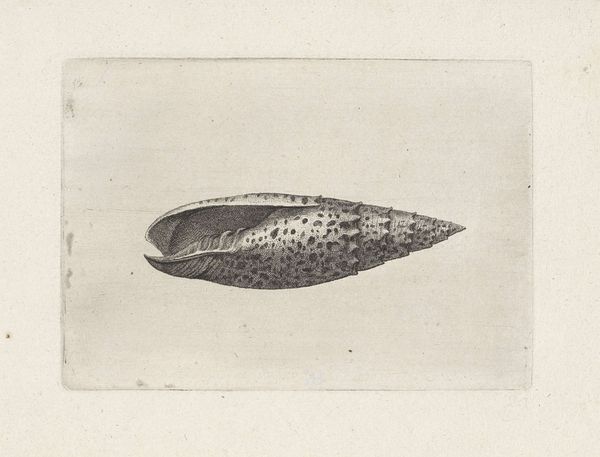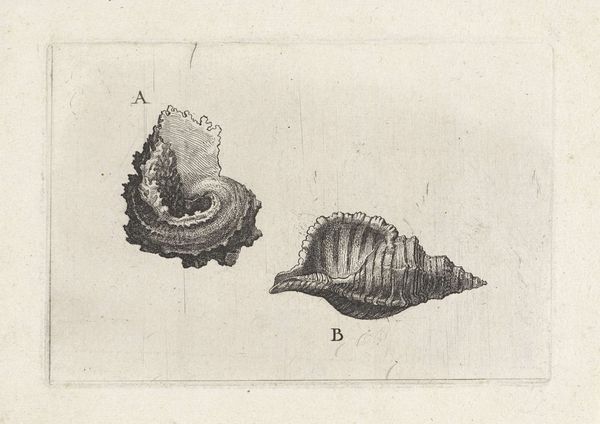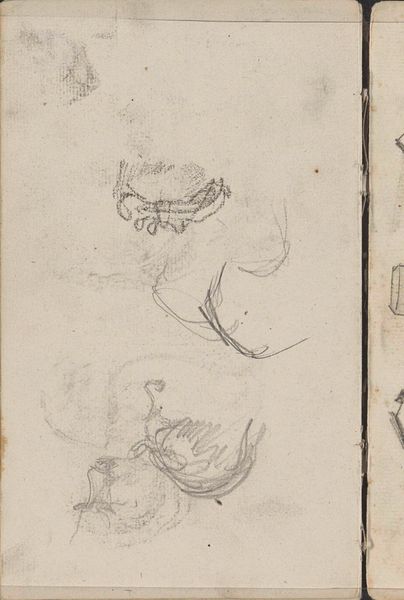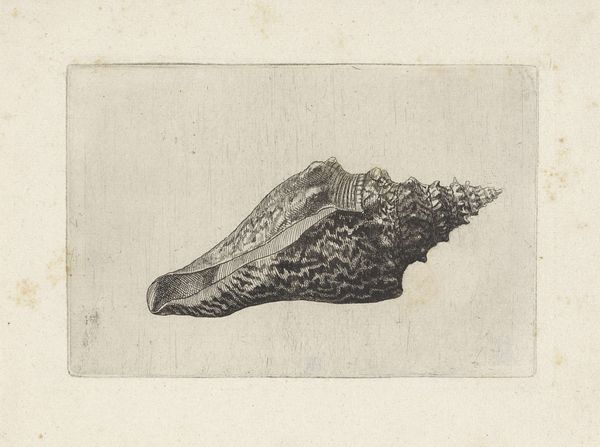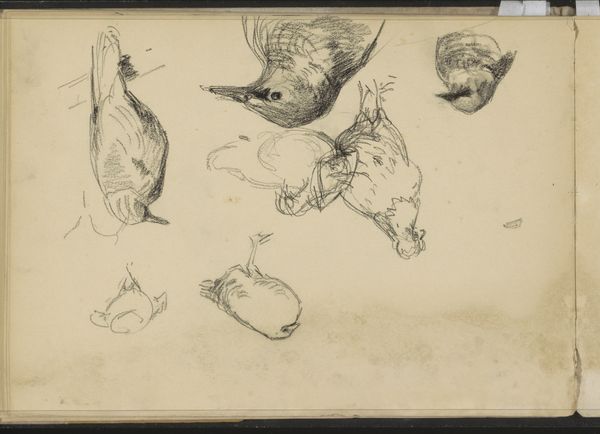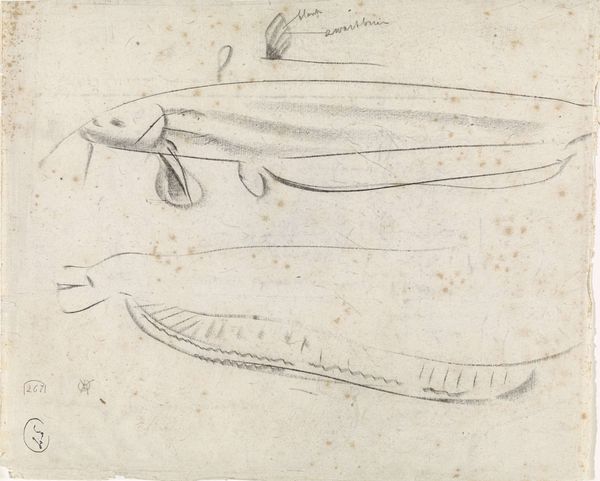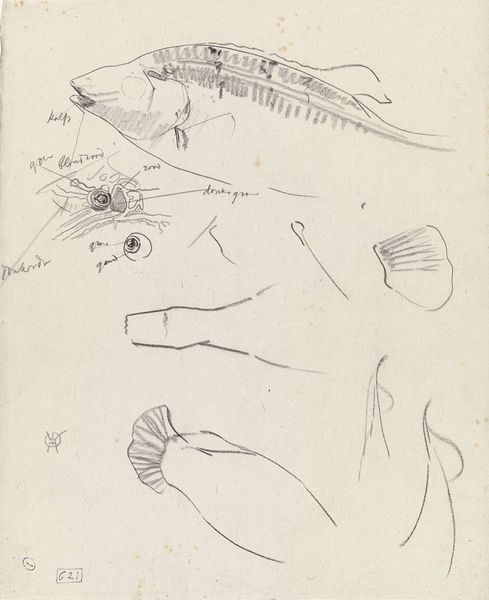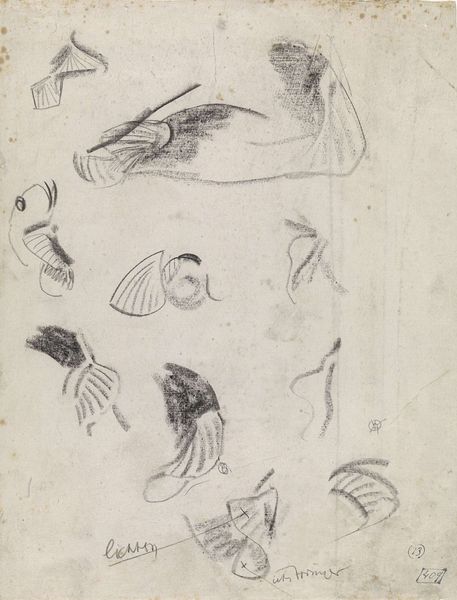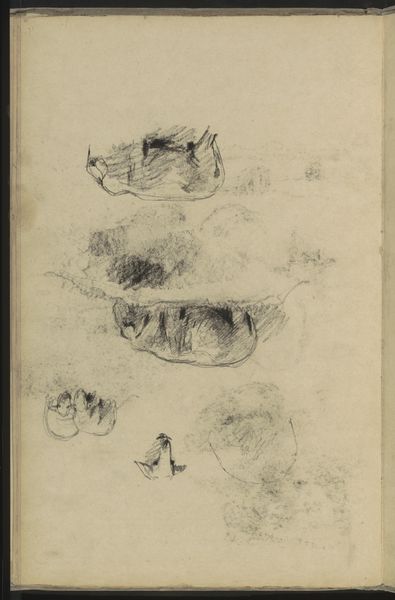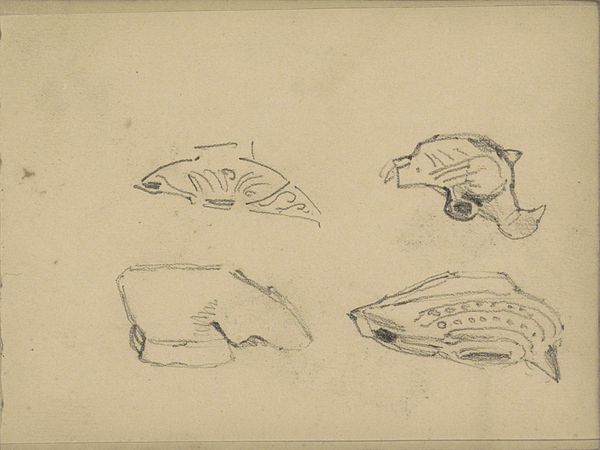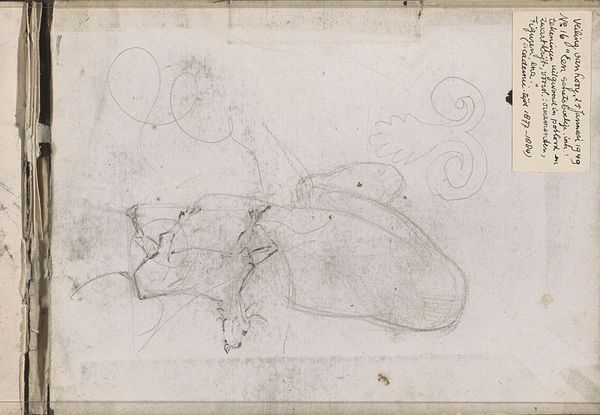
drawing, paper, pencil, graphite
#
portrait
#
drawing
#
figuration
#
paper
#
form
#
pencil
#
line
#
graphite
#
realism
Copyright: Public Domain: Artvee
Curator: Robert Smirke's "Study of the Head of a Snake," a graphite and pencil drawing on paper, strikes me immediately with its cold, clinical detachment. The multiple perspectives—almost like a scientific plate—create a sense of removed observation. Editor: Absolutely. The use of graphite pencil points directly to the process – to the artistic labour, even. I imagine Smirke carefully layering the graphite to capture the textures and gradations. I wonder about the specific paper he used and whether it held particular significance to the broader studio practices of the period. Curator: Right. And that paper, the support itself, hints at wider social issues: the availability of materials, their production… But turning back to the subject, snakes have such a potent symbolic charge. What does it mean to dedicate artistic labor to these specific creatures? The image can become loaded with connotations of temptation, deceit, or even primordial power. Editor: I find it interesting to think about how the snakes have historically been gendered as feminine symbols, linked to temptation or danger, thus, I wonder how we might question power dynamics within cultural representations. Do you agree this can apply in that case? Curator: It's definitely plausible to consider it within that framework. One must consider it as an act of observation – capturing detail and structure with sharp precision. Looking past symbolism to pure representation seems more valuable in the here and now. Editor: True. It calls us to observe with nuance, deconstructing those harmful stereotypes and finding respect for its existence and unique anatomy and physiology. It becomes a tool for empowerment rather than degradation through deeper appreciation for material specificity and ecological placement. Curator: So we can choose whether to value either their physicality as rendered here, or the weight of the symbolic meaning. I suppose there's value in both perspectives. Editor: Perhaps in the future, artworks will consciously aim to bridge that divide, fostering new ways to honor marginalized peoples, or more broadly to foster critical environmental change.
Comments
No comments
Be the first to comment and join the conversation on the ultimate creative platform.
